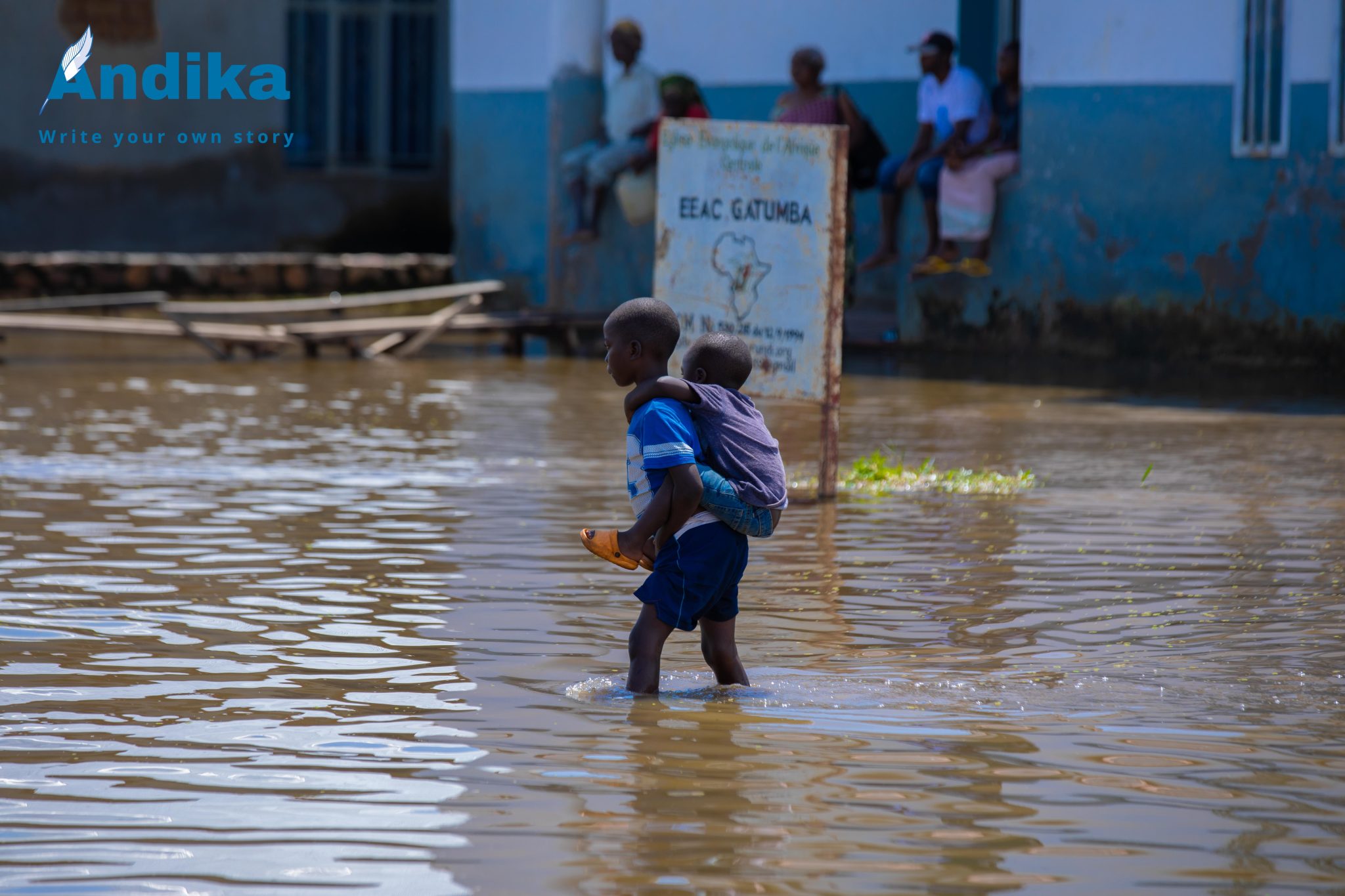
(Courtesy of Andika Magazine)

(Courtesy of Andika Magazine)
In the small town of Gatumba at the border between Burundi and the Democratic Republic of Congo in Central Africa, water has become both a lifeline and a threat.
Since 2021, floods from Lake Tanganyika and the Rusizi River have swallowed gardens and destroyed homes, displacing families who count on the water for their livelihoods, and pushed wildlife out of their shrinking habitats.
This disaster is not an isolated event. Burundi is among the 20 countries most vulnerable to climate change, according to the United Nations. Historically, “Lake Tanganyika’s water levels have peaked every 60 to 66 years, recorded in 1878, 1938, 1964, and now again”, said Albert Mbonerane, former Burundian Minister of Environment and founder of Action Ceinture Verte (ACVE). Since 2020 the Tanganyika Lake has been overflowing. But unlike previous cycles, this time the damage is worse.
“Construction in wetlands, farming on riverbanks, illegal dumping, and ignoring environmental laws have turned a predictable rhythm into a humanitarian and ecological catastrophe,” Mbonerane said.
According to UNICEF, many of the people in Gatumba are small scale fisher-traders, relying on fishing and petty trade for their livelihoods.
Between late 2023 and early 2024, Burundi faced unusually heavy rainfall. To Athanase Nkunzimana, Ph.D., a lecturer and researcher in geographical sciences, environment, and population at the University of Burundi, this was no surprise, and, he said, scientists saw it coming.
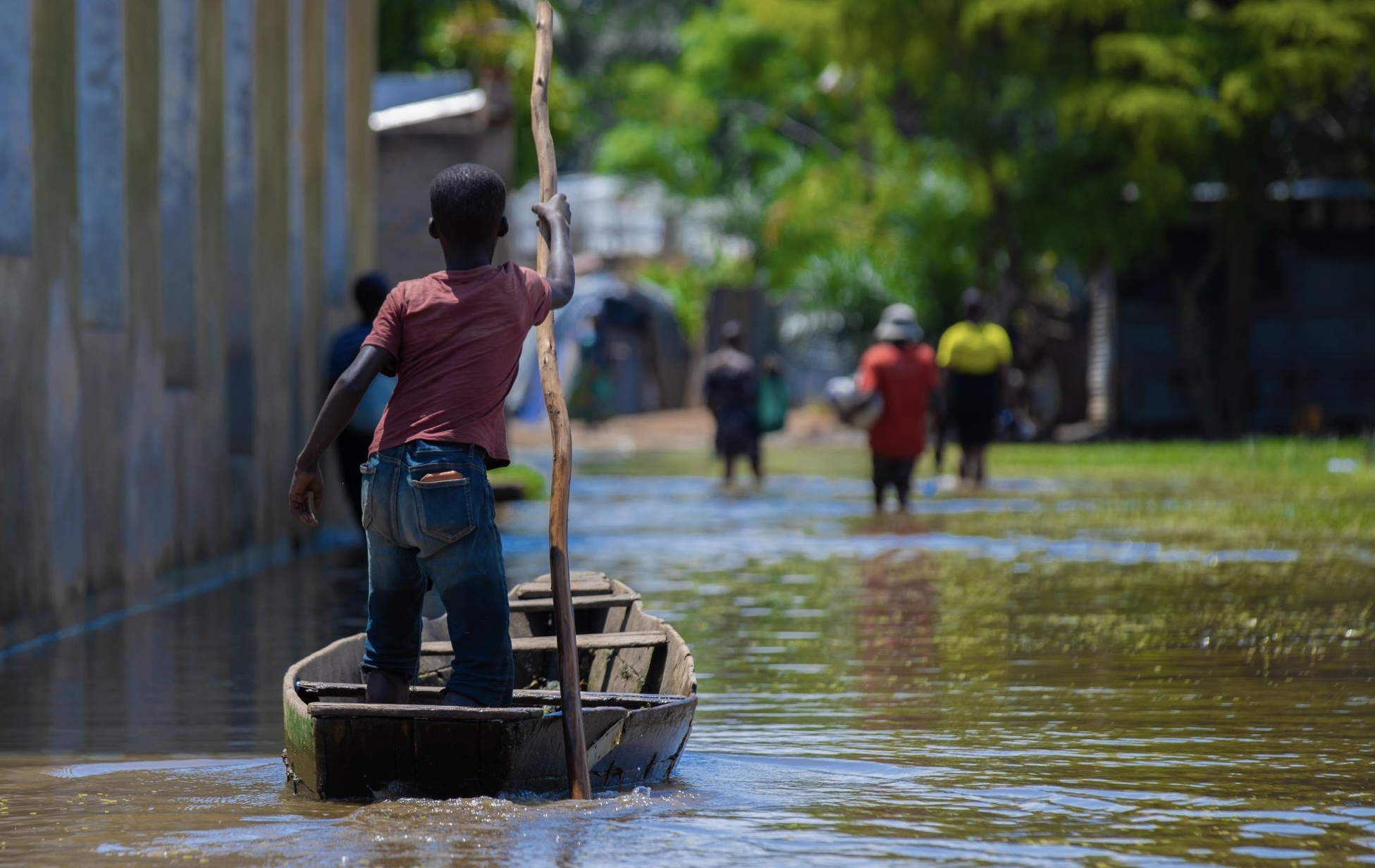
“By July 2023, forecasts had already warned about the upcoming rainy season between November 2023 and March 2024. When El Niño is intense, as in 2023–2024, East Africa receives heavier rainfall, and Gatumba flooded again by February,” he said. The double threat came from rising waters of Lake Tanganyika and the overflowing Rusizi River. Entire neighborhoods along the lake’s coast in Bujumbura were forced to evacuate, from Kajaga to Kibenga — a distance covering 13 kilometers, or approximately eight miles.

Gatumba’s location makes it especially vulnerable. With a slope of barely reaching 2 degrees, the land is almost flat. As a result, when Lake Tanganyika’s water level rises, the Rusizi River cannot drain effectively. “There’s a phenomenon of diffluence, (meaning that) water stagnates or even flows backward, though it’s not always visible. This slow drainage floods low-lying areas like Gaharawe 1 and 2,” Nkunzimana said.
The Lukuga River is Lake Tanganyika’s only natural outlet. “Historically, it drains 6% to 18% of the lake’s water into the Congo River, but sediment is blocking its flow,” Mbonerane said. When the Lukuga cannot carry water out, the lake becomes a giant basin without relief, especially when fed by the swollen Rusizi River and many other rivers which flow into the lake.
“Dredging the Lukuga River would restore its natural outflow and prevent some of these catastrophic floods in Gatumba,” Mbonerane said.
Burundi’s Water Code, a legal framework enacted in 2012, sets rules to protect its lakes and rivers. Around Lake Tanganyika, a 150-meter (approximately 164 yards) buffer zone must be kept, while inland lakes need 50 meters (55 yards), rivers flowing into the lakes 25 meters (27 yards), and other rivers 5 meters (5.5 yards). On top of that, a 4-meter walkway is required to keep these areas clear and safe. But Nkunzimana believes these rules are outdated and poorly enforced.
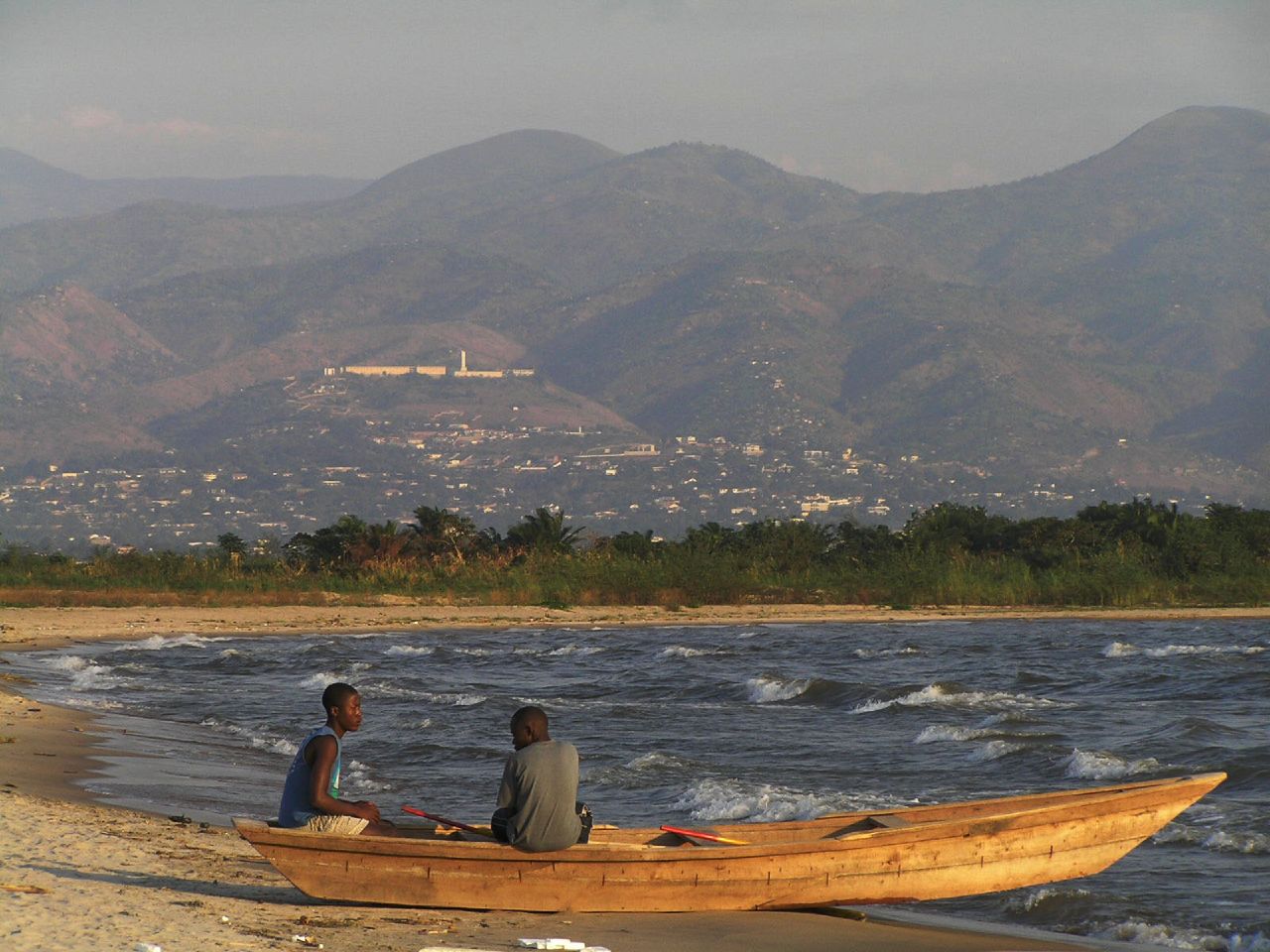
“We should set safety limits based on elevation — 778 to 780 meters for buffer zones — to ensure people are really protected. For rivers, the current 25-meter buffer should be measured from the major riverbed, not the minor one,” he said, as one suggestion. Yet construction continues in buffer zones, despite laws, increasing the risk to communities.
According to humanitarian agencies in Burundi, Gatumba has faced repeated mass displacements in recent years due to relentless flooding. According to an article published by UNICEF USA, floods swept away about 10,000 homes in Gatumba in 2020. Across Burundi at that time, more than 100,000 were reported as internally displaced by the International Organization for Migration. In just the past two years, thousands have been evacuated multiple times, including 12,000 people in 2024 and more than 10,000 in 2023, with many ending up in temporary camps or resettlement sites.

Some residents of Gatumba are calling for the construction of levees along the Rusizi River to prevent flooding. Etienne Habonimana expressed his frustration, noting that even those few families who were relocated from Gatumba are considering returning.
“We feel abandoned, like children without parents. Our living conditions are dire. Our homes and crops have been destroyed, and although we were promised that the Rusizi would be drained, nothing has been done so far,” Habonimana said. “We were displaced to Gateri, but life there is extremely difficult. Many organizations such as IOM, WFP, and OCHA have done their best, but conditions remain harsh. Families are living in tents.”
Habonimana suggested that building a levee along the Rusizi’s banks could be one of the solutions, allowing the community to contribute to national development. “Members of the diaspora are willing to help. They brought in machinery to start draining the Rusizi, but their efforts were blocked. They were removing sand from the river and trying to clear the overflow points that flood Gatumba, yet they were denied permission to continue,” he added.
However, experts warn that building levees is not a sustainable solution for this location. “Even with a levee, if Tanganyika Lake levels remain high and block the river’s drainage, the water will find another way,” Nkunzimana said. “It’s not a durable solution for Gatumba, though it might work for rivers like the Mutimbuzi and others.”
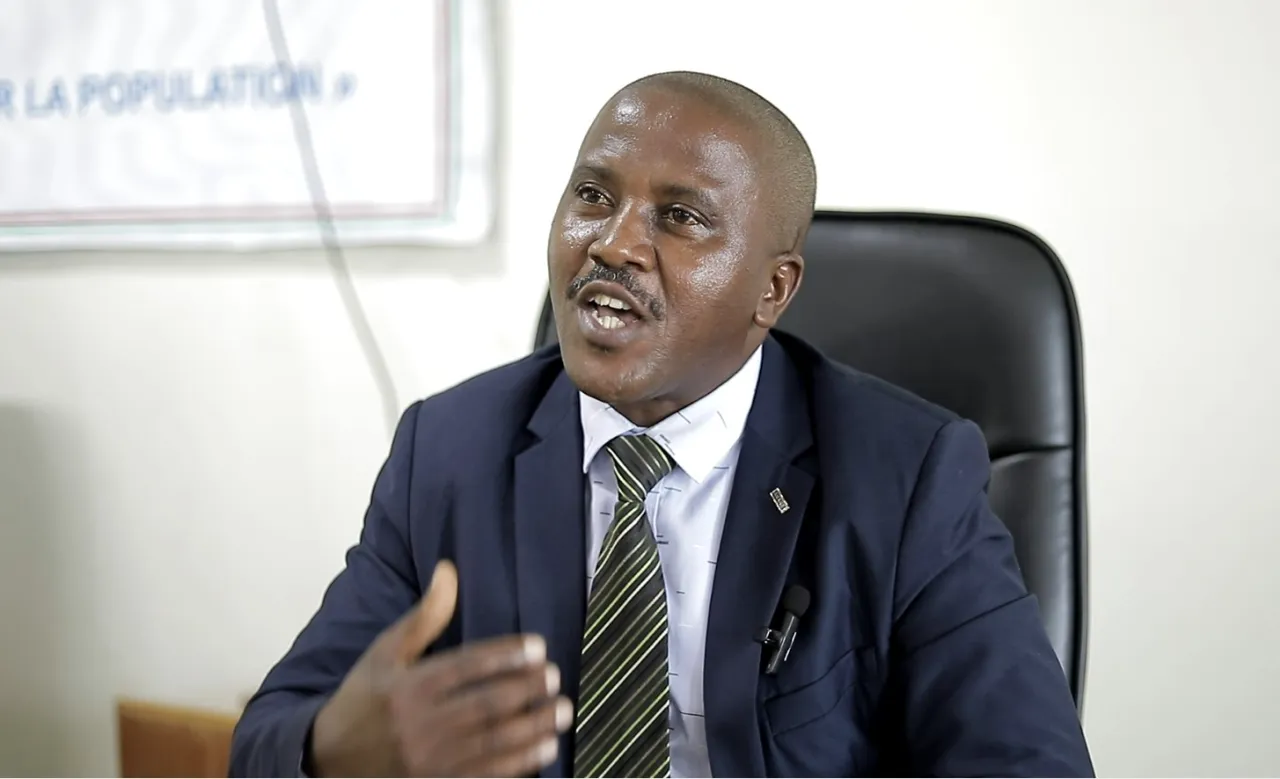
Mbonerane points to the U.S. experience with the Mississippi River, where after devastating floods in 1927 and 1993, U.S. authorities realized levees alone were not enough. They restored wetlands, relocated communities, and managed floodplains — a model Burundi could adapt.
For Mbonerane, the crisis in Gatumba reflects a larger environmental emergency that requires urgent national attention. In addition to dredging the Lukuga River to restore the lake’s natural drainage, he advocates practical solutions, including: launching large-scale reforestation along riverbanks to rebuild natural buffers, establishing effective waste management systems in Bujumbura to prevent pollution from reaching the lake, enforcing zoning laws and relocating illegal settlements from flood-prone areas, and educating both leaders and communities about environmental regulations while ensuring strict enforcement.
“These are not impossible tasks. They require political will, resources, and community participation,” he said.
While El Niño has worsened rainfall patterns, both Nkunzimana and Mbonerane emphasize that climate change, poor urban planning, and environmental neglect have magnified its impact.
“El Niño is a trigger, but human activity is the fuel. If we keep destroying wetlands, polluting rivers, and building in the wrong places, the next flood will be worse,” Mbonerane said.
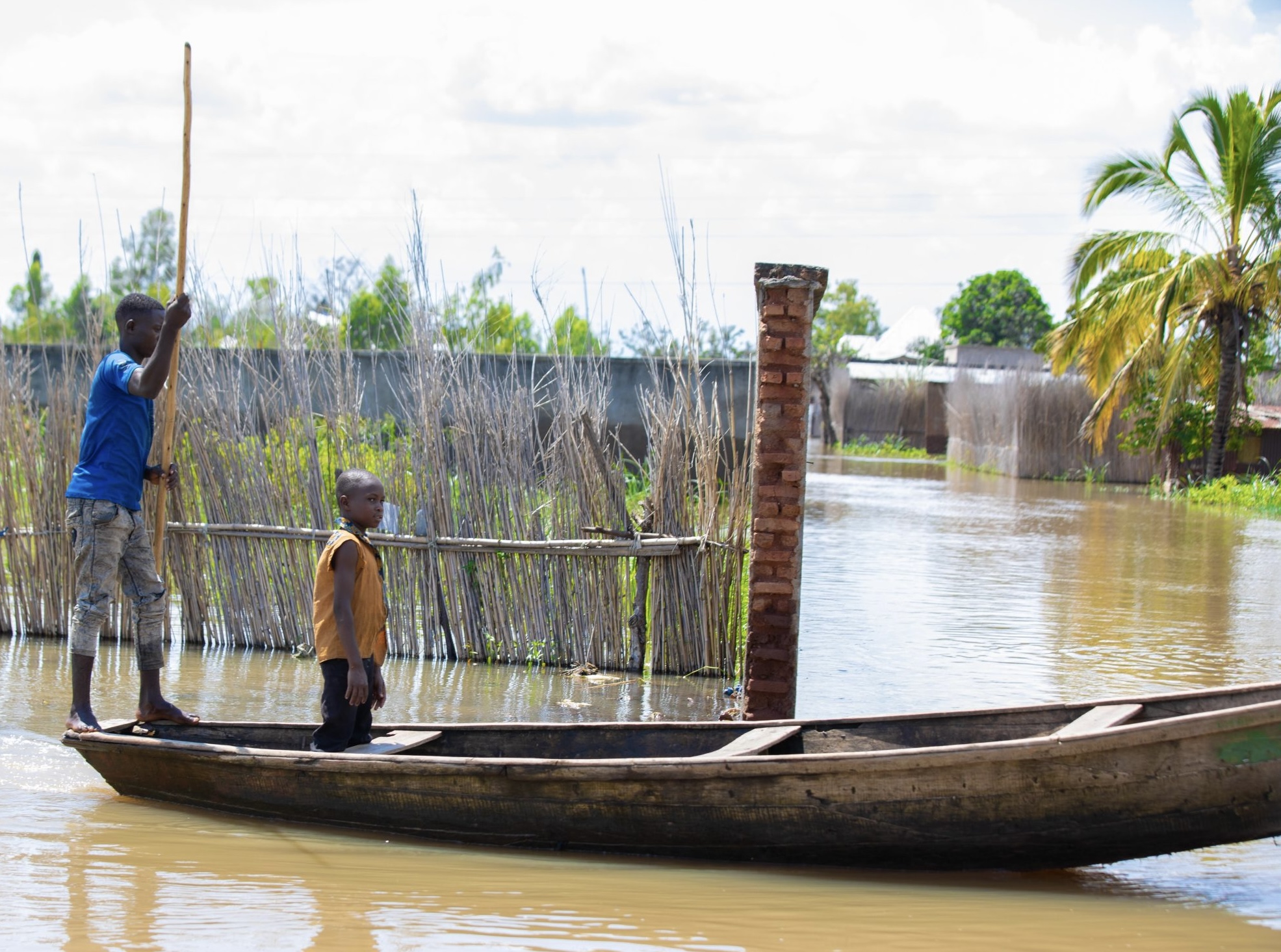
Nkunzimana believes that long-term resilience will come only from a multidisciplinary approach: “Hydrology, climatology, urban planning, and social sciences must work together. Disaster prevention is not just about emergency response. It’s about planning, coordination, and public awareness.”
In the absence of such collaboration, Gatumba’s residents continue to live under the shadow of the next flood, rebuilding homes and lives with each season, only to see them swept away again. The waters of Lake Tanganyika will eventually recede.
But for Gatumba residents, the question is not just when the floods will end, it’s what will be done. For now, the people of Gatumba live between land and water. While many fear that an irreversible tragedy may be on the horizon, advocates like Mbonerane continue to seek proactive change.
Editor’s Note: The views and information presented herein are those of Melchisedeck Boshirwa and do not represent the Mandela Washington Fellowship, the U.S. Department of State, or IREX.